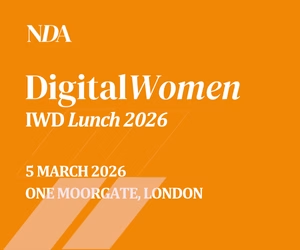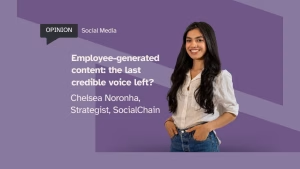NDA recently held a roundtable, in partnership with Adyoulike, to discuss the ‘Next Generation of Native Advertising. In this piece, we hear from attendees Azad Ali, Head of Performance Insight at Spark Foundry; Monica Tailor, Head of Digital and at McCann Manchester and head of LIVE UK for McCann Worldgroup; Matt Morgan, Managing Partner, Head of Product at Dentsu; Sarah Baumann, Managing Director at VaynerMedia London; and Adyoulike Co-founder and CRO, Francis Turner.
Native advertising is defined by Oxford Languages as, “material in an online publication which resembles the publication’s editorial content but is paid for by an advertiser and intended to promote the advertiser’s product”. Now, that may seem like a straightforward enough definition, but what native means in action tends to differ depending on who you talk to.
What is it?
McCann’s Tailor – who admitted having to Google ‘native’ ahead of the roundtable, because the way people talk about it has changed – has seen that native now tends to fall into two buckets for clients, though they favour one bucket more than the other.
“There’s that branded publisher space, where they, sometimes, don’t have the best experience, but there’s also native in their own content marketing spaces, which is really interesting,” she said. “That’s where clients are getting most excited. There seems to be a bigger investment into that content marketing space.”
The general consensus from all involved was that digital native is little bit different to how it once was. And, in the case of Dentsu’s Morgan, he’s seen native shift up the funnel.
“My first exposure to native was working on performance clients, who were using it as a lower funnel, traffic driving channel to basically fuel a retargeting programme,” he explained. “The world’s moved on quite a bit since then, and native has grown much more, in terms of the availability of formats and availability of inventory.
“Much more now, it’s moving toward the brand end of the funnel, in terms of advertising strategy. And, by that, I mean the ability to measure based on brand metrics and all the stuff that goes with that. The arrival of a lot more video has been important to that.”
Native technology platform Adyoulike is seeing most of its money coming from “people repurposing display or social budgets into native,” according to Turner.
“A key point of what we do as a business is to make sure that those creatives look, feel and belong the way that they should do in the publisher environment. So, it’s not necessarily about trying to create any new metrics,” said Tuner. “It’s ‘okay, if we’re putting on a plan against display or video, how can native perform against those same KPIs and benchmarks, and how could it be done?’ Sometimes it works. Sometimes it won’t. Hopefully, the majority of the time it does work.”
Embracing native
It’s all well and good for advertisers to begin shifting budgets toward native, but they need to know that consumers actually respond well to it, particularly as native experiences haven’t always been the most consumer-friendly.
Spark Foundry’s Ali believes that native advertising can thank the rise of influencers for putting it in a more positive light in recent years.
“Especially if you think about beauty and fashion bloggers, there’s an almost instant appreciation from the user base of ‘here’s someone that is talking about something that they know, therefore, I’m going to go and buy the products that they’re advertising’. And that immediate response is essentially where native is supposed to sit,” Ali explained.
“There’s relevant content, and then you’ve got an advertisement that’s intertwined with that content. It almost gives a bit more legitimacy to that advertisement being in a relevant context. A few years ago, I don’t think it would have had that element of authenticity to it, so, in a strange way, I think it’s played to the benefit of native advertising.”
VaynerMedia’s Baumann agrees that “the role of influencers, and the role of people’s behaviours on social, and how that relates to native is super interesting”, because it’s ushered in an era where people are happy to discover new brands and buy products from them without having any great knowledge of said brands.
But equally, though consumers may be happy to clickthrough on new brands, she warns that not getting the content right will very quickly mean losing that customer before you’ve gained them.
“We’re now in an era where people don’t need to know a brand in order to be interested in clicking through or buying,” said Baumann. “An enormous number of brands have been built on social. A number of people have discovered and bought products on platforms like TikTok. That’s ushering us into a very different and exciting new era, particularly for younger audiences. But, because people are really open to new brands and clicking through, if the content isn’t right, doesn’t deliver, and it’s not relevant to them, then you’ve lost them.”










